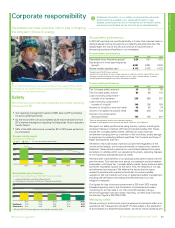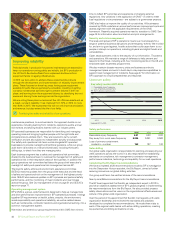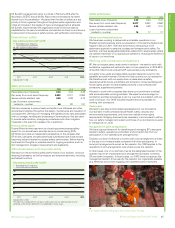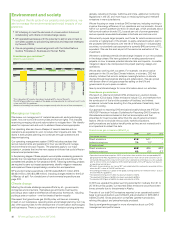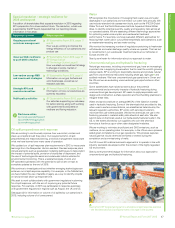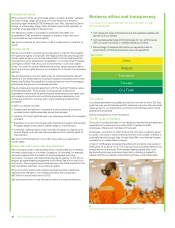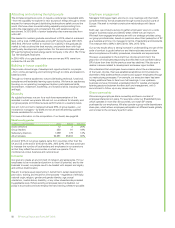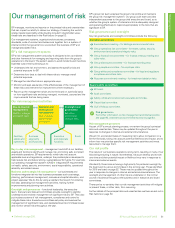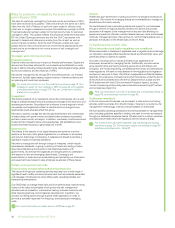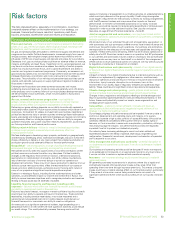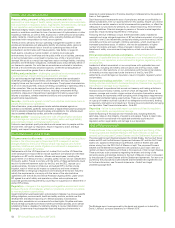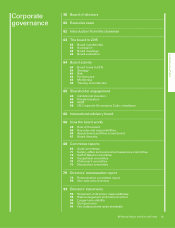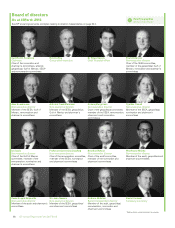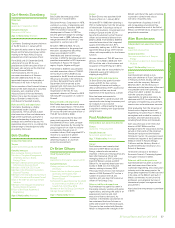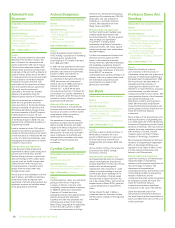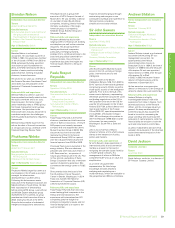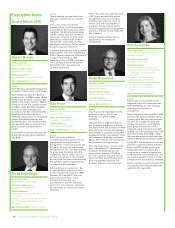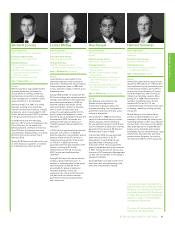BP 2015 Annual Report Download - page 56
Download and view the complete annual report
Please find page 56 of the 2015 BP annual report below. You can navigate through the pages in the report by either clicking on the pages listed below, or by using the keyword search tool below to find specific information within the annual report.
Risks for particular oversight by the board and its
committees in 2016
The risks for particular oversight by the board and its committees in 2016
have been reviewed and updated. These risks remain the same as in 2015
other than the Gulf of Mexico oil spill and major project★ delivery risks,
which are no longer considered to require this additional oversight in 2016.
Financial resilience has been added to the high priority risks for particular
oversight in 2016. This update reflects the proposed settlements between
BP, the United States government and the five Gulf Coast states with
respect to federal and state claims arising from the oil spill, as well as
current market conditions. Both the Gulf of Mexico oil spill and major
project delivery risks will continue to be monitored as appropriate by the
board and its committees in the normal course of risk oversight and
management.
Strategic and commercial risks
Financial resilience
External market conditions can impact our financial performance. Supply and
demand and the prices achieved for our products can be affected by a wide
range of factors including political developments, technological change, global
economic conditions and the influence of OPEC.
We actively manage this risk through BP’s diversified portfolio, our financial
framework, liquidity stress testing, regular reviews of market conditions and
our planning and investment processes.
For more information on our financial framework see page 18, Our
strategy on page 13, Our markets in 2015 on page 24 and Liquidity
and capital resources on page 219. See our Longer-term viability
statement on page 94.
Geopolitical
The diverse locations of our operations around the world expose us to a wide
range of political developments and consequent changes to the economic and
operating environment. Geopolitical risk is inherent to many regions in which
we operate, and heightened political or social tensions or changes in key
relationships could adversely affect the group.
We seek to actively manage this risk through development and maintenance
of relationships with governments and stakeholders and becoming trusted
partners in each country and region. In addition, we closely monitor events and
implement risk mitigation plans where appropriate. We established a new
board committee focusing on geopolitical risk in 2015.
Cybersecurity
The threats to the security of our digital infrastructure continue to evolve
rapidly and, like many other global organizations, our reliance on computers
and network technology is increasing. A cybersecurity breach could have a
significant impact on business operations.
We seek to manage this risk through a range of measures, which include
cybersecurity standards, ongoing monitoring of threats and testing of cyber
response procedures and equipment. We collaborate closely with
governments, law enforcement agencies and industry peers to understand
and respond to new and emerging cyber threats. Campaigns and
presentations on topics such as email phishing and protecting our information
and equipment have helped to raise employee awareness of these issues.
Safety and operational risks
Process safety, personal safety and environmental risks
The nature of the group’s operating activities exposes us to a wide range of
significant health, safety and environmental risks such as incidents associated
with releases of hydrocarbons when drilling wells, operating facilities and
transporting hydrocarbons.
Our OMS helps us manage these risks and drive performance improvements.
It sets out the rules and principles which govern key risk management
activities such as inspection, maintenance, testing, business continuity and
crisis response planning and competency development. In addition, we
conduct our drilling activity through a global wells organization in order to
promote a consistent approach for designing, constructing and managing
wells.
For more information on safety and our OMS see page 43.
Security
Hostile acts such as terrorism or piracy could harm our people and disrupt our
operations. We monitor for emerging threats and vulnerabilities to manage our
physical and information security.
Our central security team provides guidance and support to our businesses
through a network of regional security advisers who advise and conduct
assurance with respect to the management of security risks affecting our
people and operations. We also maintain disaster recovery, crisis and business
continuity management plans. We continue to monitor threats globally and, in
particular, the situation in the Middle East and North Africa.
Compliance and control risks
Ethical misconduct and legal or regulatory non-compliance
Ethical misconduct or breaches of applicable laws or regulations could damage
our reputation, adversely affect operational results and shareholder value, and
potentially affect our licence to operate.
Our code of conduct and our values and behaviours, applicable to all
employees, are central to managing this risk. Additionally, we have various
group requirements and training covering areas such as anti-bribery and
corruption, anti-money laundering, competition/anti-trust law and international
trade regulations. We seek to keep abreast of new regulations and legislation
and plan our response to them. We offer an independent confidential helpline,
OpenTalk, for employees, contractors and other third parties. Under the terms
of the 2012 criminal settlement with the US Department of Justice and the
2014 settlement with the US Environmental Protection Agency, an ethics
monitor is reviewing and providing recommendations concerning BP’s ethics
and compliance programme.
Find out more about our code of conduct and our business ethics on
page 48, and the ethics monitor on page 42.
Trading non-compliance
In the normal course of business, we are subject to risks around our trading
activities which could arise from shortcomings or failures in our systems, risk
management methodology, internal control processes or employees.
We have specific operating standards and control processes to manage these
risks, including guidelines specific to trading, and seek to monitor compliance
through our dedicated compliance teams. We also seek to maintain a positive
and collaborative relationship with regulators and the industry at large.
For further information see Upstream gas marketing and trading
activities on page 33, Downstream supply and trading on page 36
and Financial statements – Note 28.
BP Annual Report and Form 20-F 201552



